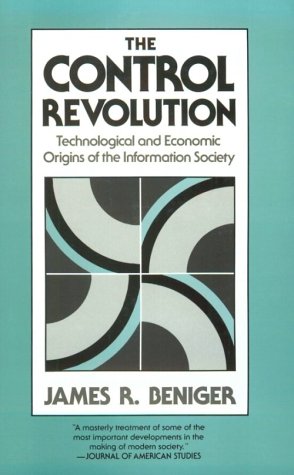Matthew Wisnioski: Engineers for Change: Competing Visions of Technology in 1960s America (2012)
Filed under book | Tags: · 1960s, 1970s, activism, computing, education, engineering, history of computing, history of technology, labour, luddism, military, science, space, technology

“In the late 1960s an eclectic group of engineers joined the antiwar and civil rights activists of the time in agitating for change. The engineers were fighting to remake their profession, challenging their fellow engineers to embrace a more humane vision of technology. In Engineers for Change, Matthew Wisnioski offers an account of this conflict within engineering, linking it to deep-seated assumptions about technology and American life.
The postwar period in America saw a near-utopian belief in technology’s beneficence. Beginning in the mid-1960s, however, society—influenced by the antitechnology writings of such thinkers as Jacques Ellul and Lewis Mumford—began to view technology in a more negative light. Engineers themselves were seen as conformist organization men propping up the military-industrial complex. A dissident minority of engineers offered critiques of their profession that appropriated concepts from technology’s critics. These dissidents were criticized in turn by conservatives who regarded them as countercultural Luddites. And yet, as Wisnioski shows, the radical minority spurred the professional elite to promote a new understanding of technology as a rapidly accelerating force that our institutions are ill-equipped to handle. The negative consequences of technology spring from its very nature—and not from engineering’s failures. “Sociotechnologists” were recruited to help society adjust to its technology. Wisnioski argues that in responding to the challenges posed by critics within their profession, engineers in the 1960s helped shape our dominant contemporary understanding of technological change as the driver of history.”
Publisher MIT Press, 2012
ISBN 0262018268, 9780262018265
296 pages
via a2
Interview with the author (Carla Nappi, New Books in Science, Technology, and Society, audio, 1h)
Review (Caroll Pursell, The American Historical Review, 2014)
Review (Kevin T. Baker, The Sixties, 2013)
Review (Stephen H. Unger, 2013)
James R. Beniger: The Control Revolution: Technological and Economic Origins of the Information Society (1986)
Filed under book | Tags: · advertising, agriculture, bureaucracy, computing, cybernetics, economy, energy, history of technology, industrial revolution, industry, information society, management, mass media, radio, society, technology, telegraphy, telephone, television, transport

“James Beniger traces the origin of the Information Society to major economic and business crises of the past century. In the United States, applications of steam power in the early 1800s brought a dramatic rise in the speed, volume, and complexity of industrial processes, making them difficult to control. Scores of problems arose: fatal train wrecks, misplacement of freight cars for months at a time, loss of shipments, inability to maintain high rates of inventory turnover. Inevitably the Industrial Revolution, with its ballooning use of energy to drive material processes, required a corresponding growth in the exploitation of information: the Control Revolution.
Between the 1840s and the 1920s came most of the important information-processing and communication technologies still in use today: telegraphy, modern bureaucracy, rotary power printing, the postage stamp, paper money, typewriter, telephone, punch-card processing, motion pictures, radio, and television. Beniger shows that more recent developments in microprocessors, computers, and telecommunications are only a smooth continuation of this Control Revolution. Along the way he touches on many fascinating topics: why breakfast was invented, how trademarks came to be worth more than the companies that own them, why some employees wear uniforms, and whether time zones will always be necessary.”
Publisher Harvard University Press, 1986
ISBN 0674020766, 9780674020764
493 pages
via babyalanturing
Review (JoAnne Yates, The Journal of Interdisciplinary History, 1988)
Review (Krishan Kumar, Journal of American Studies, 1988)
Review (Kirkus Reviews)
Book-inspired website
Publisher
PDF (16 MB, updated on 2016-6-16)
Comment (0)Jon Gernter: The Idea Factory: Bell Labs and the Great Age of American Innovation (2012)
Filed under book | Tags: · communication technology, computing, engineering, history of communications, history of computing, history of technology, networks, radio, technology, telephone

“High-handed corporate monopoly and high-minded national treasure, the American Telephone and Telegraph Company (AT&T) was a unique project of America’s pragmatism and for decades the envy of the world in extending low-cost local telephone service. At the heart of AT&T was its R&D unit, Bell Laboratories, the world’s greatest entity of its kind, and a giant manufacturing arm, Western Electric.
The Idea Factory is the first study of Bell Labs that puts its history in its full organizational, political, and administrative context. AT&T was a company striving to expand and maintain a privileged empire under a government that saw it alternatively as a trusted military/industrial partner and an anticompetitive threat. This ambiguous embrace, New York Times Magazine writer Jon Gertner suggests, inadvertently encouraged a culture that combined a gifted and diverse workforce with a long-term outlook, creating the foundations of a new information economy, which in turn made radical changes in the charter of the parent company inevitable.
Gertner’s story is the interaction between three leaders of Bell Labs in its critical years—Mervin Kelly, Jim Fisk, and William Oliver Baker—and three of its greatest scientific minds: William Shockley, Claude Shannon, and John Pierce.” (from a review by Edward Tenner)
Publisher The Penguin Press, New York, 2012
ISBN 1594203288, 9781594203282
422 pages
via Steve McLaughlin
review (Edward Tenner, Issues in Science and Technology)
review (Dave Tompkins, Slate)
review (Jesse Hicks, The Verge)
PDF (EPUB, updated on 2013-5-7)
PDF (MOBI, updated on 2013-5-7)

